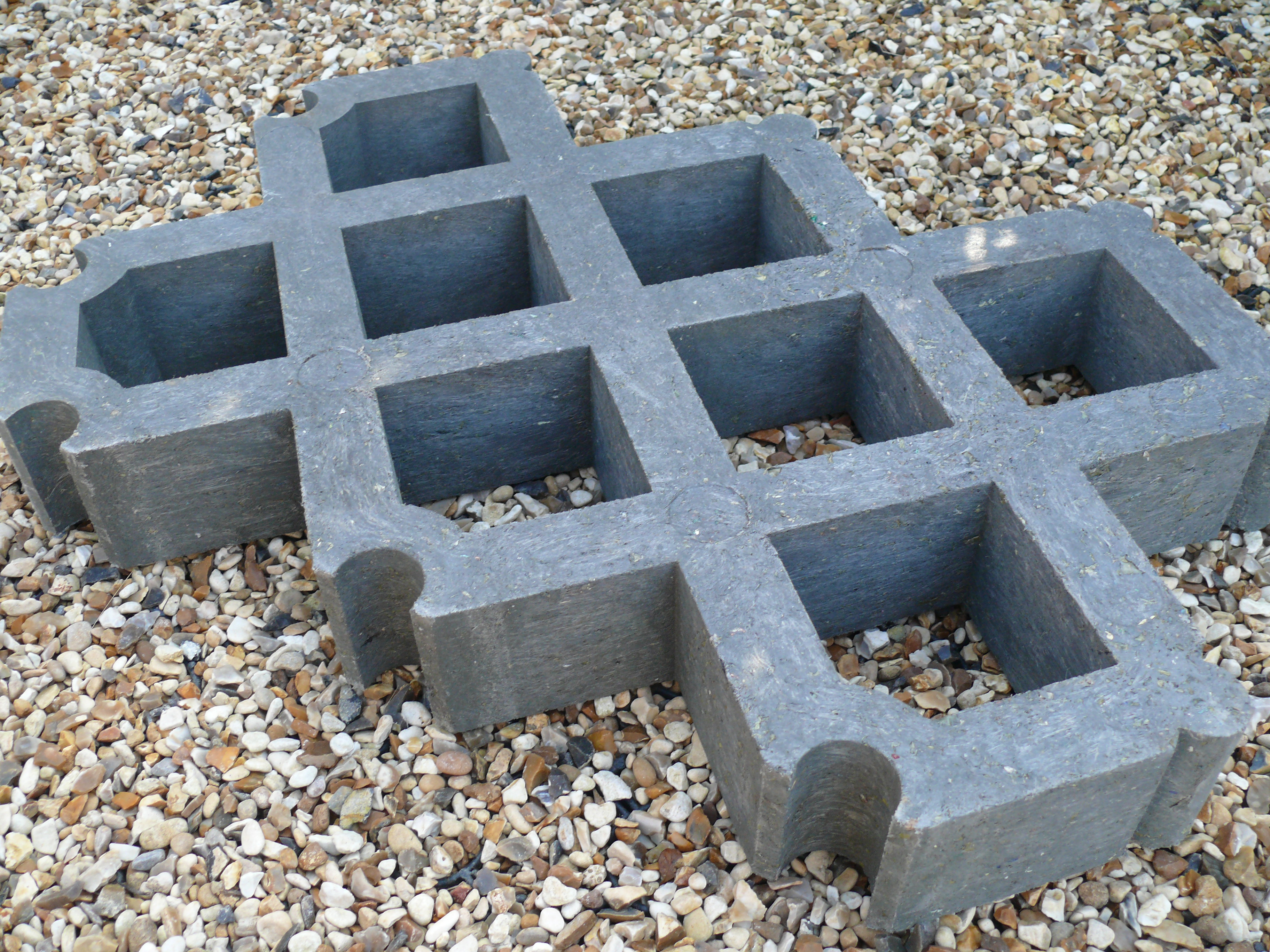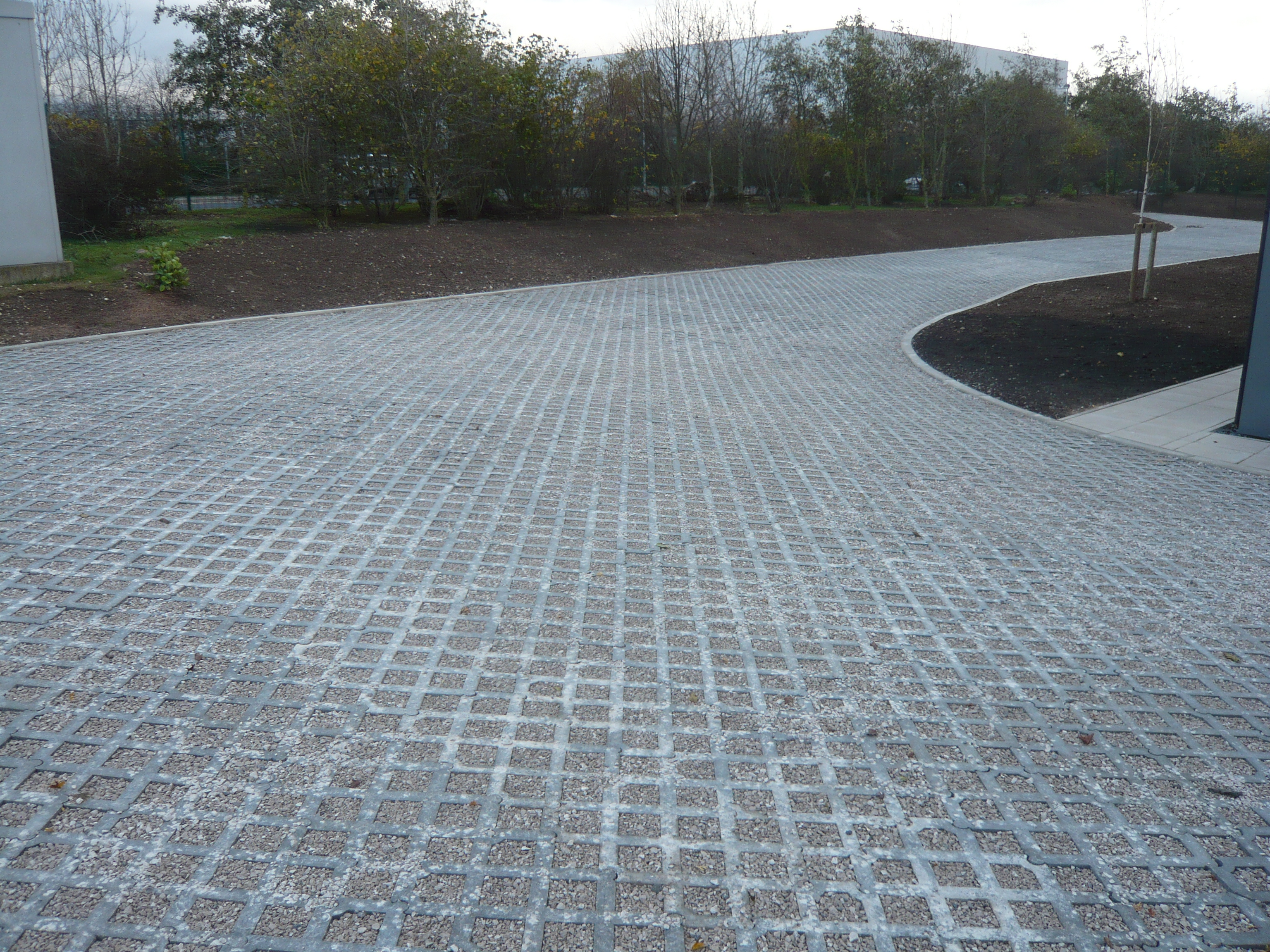Hot Weather Incoming – Are You Ready? Stock up now on essentials to beat the heat.

Truck Grid Max Installation Guidelines - Gravel
Suregreen Truckgrid-Max Installation Guide – Gravel Finish Heavy Duty Permeable Paver
Truckgrid-Max porous plastic grids provide a solution to a wide range of trafficking needs where a free-draining gravel or angular stone surface is required. Types of traffic may include pedestrians, bicycles, cars and vans, but Truckgrid-Max is especially suitable for regular trafficking by heavier-weight vehicles such as dustcarts, dray lorries, HGVs and forklifts.
Download Truck Grid Max Gravel Installation GuidelinesApplications include:
- Emergency access routes
- Busy business forecourts
- Forklift loading areas
- HGV loading bays
- Industrial yards
Manufactured from fully recycled plastics, Truckgrid-Max porous pavers have been designed to meet the demands and loadings imposed across a wide range of end requirements and site conditions.
To ensure Truckgrid-Max operates at its optimum working condition over a long period of time (which could be 20 years or more), the plastic pavers need to be installed correctly as per our guidelines described below.
All Truckgrid-Max plastic paver installations will have some basic requirements to the construction profile. Some components will need to be designed to meet the needs of the client, but the elementary building blocks are the same. Please see our design guidelines for further information.
Installation steps
Prior to any work on site, it is highly advisable that a site survey – even if only a rudimentary one – is completed. Ask questions such as:
- Will the site drain naturally?
- What slopes - if any - need to be allowed for?
- What type of surface conditions and what type of soils are on site?
- Is the type of soil on the surface the same 200 - 400mm under the surface (will draining water be trapped on a non-porous layer?)
You will also need to consider the type of edge retention system or kerb that the Truckgrid-Max porous plastic pavers will require. This should be as substantial as 150mm x 150mm concrete road kerbs due to possible heavyweight lateral loadings. Please refer to our design guide or get in touch with us for any technical advice.
There are four basic layers to any construction profile.
1) The sub-grade
The sub-grade is at the bottom of the profile. This is the layer after removal of the existing soils. This soil is removed to the required depth which has been calculated based on the type and frequency of traffic and the ability of the existing soils to handle imposed loadings. The sub-grade could be as little as 100mm or as much as 500mm below the existing surface. It is advisable that the sub-grade is compacted (by roller or any other method) and an even working surface created.
2) The sub-base layer
On top of the sub-grade, a sub-base layer needs to be installed. The depth of this layer should be pre-determined (please see our design guidelines). This sub-base layer needs to be stable and porous. The sub-base ideally needs to be composed of a free-draining, sharp angular fill material (angular stone or aggregate), 95% of which the particle size is of a mixed nature between 5mm to 45mm (MOT type3 or similar) with reduced fine content which would produce a stable and porous sub-base/hard-core after compaction. MOT type 1/crushed concrete would be generally unsuitable because of the high fine content, leading to minimal porosity and permeability. The sub-base needs to be compacted to the required depth.
At the bottom and the top of the sub-base, a geotextile separation layer needs to be installed. The geotextile will stabilise the sub-base by separating/filtering, and this will limit fine material migration into the sub-base while still being permeable and allowing water to infiltrate. The fines - if allowed in - would cause eventual deformation/dipping of the top surface and drainage issues. On top of the bottom layer of geotextile, a 20KN geogrid can be applied to reduce the depth of sub-base used and also reduce the amount of spill caused by works (please see our design guidelines for guidance). Not all sites will benefit from using a geogrid, mainly due to economies of scale. Please contact our technical team for further direction.
3) The bedding layer
For a gravel finish, the bedding layer needs to be free-draining, uniform, level and well-compacted, comprising of a 20mm-thick bedding layer of clean coarse grit sand. Do not exceed the recommended bedding layer thickness. This bedding layer may require compaction using a vibrator plate or roller and must be smooth and level to allow an even surface for Truckgrid-Max porous pavers to be laid onto.
4) Laying Truckgrid-Max
Truckgrid-Max should be laid from above onto the prepared bedding layer, working from one corner laying adjacent paving grids into their connectors. Truckgrid-Max plastic paving grids can be cut on-site using a handsaw, jig-saw or other mechanical saws to match site/client requirements, shapes and obstacles.
5) Filling the pavers
Truckgrid-Max then needs to be filled with a mixed 5 - 10mm sharp angular gravel. The shearing action of the gravel means that Truckgrid-Max becomes locked within the gravel, enabling it to resist the dynamic loadings imposed by the surface traffic. A light whacker plate after filling may be applied to help settle the gravel and then a small top-up to refill the cells may be necessary. It is not advised to overdress Truckgrid-Max.
Notes on gravel
Experience has shown that a mixed 5mm - 10mm sharp angular gravel gives the best results for providing a long-term, very low-maintenance and hard-wearing surface. The gravel pieces interlock and shear with each other, the smaller particles then filling the smaller voids to give a secure, locked and sustainable finish. Single size gravel or rounded gravel (such as pea shingle) will lead to issues and failure. The more rounded and single size the gravel, the faster that problems will occur.To purchase Truckgrid-Max or any other Suregreen permeable pavers please visit our shop section of the website or click here - Suregreen permeable pavers
Recommended Products
On sale
On sale
Geotextile Membrane Landscape Fabric
- SKU: 438079-438109
- Weight: 1kg-8kg
- Brands: Suregreen
- Size: 1m x 10m, 2m x 25m, 2m x 50m
- Permeability: 100 l/m2/s
Truckgrid-Max | Heavy Duty Permeable Paver | 1 Grid
- SKU: 435191
- Thickness: 80mm
- Size: 600mmx 400mm
- Colour: Grey
PP50 | Heavy Duty Permeable Paving Grids | 1sqm
- SKU: 439243
- Thickness: 50mm
- Size: 1 sqm
- Colour: Black










